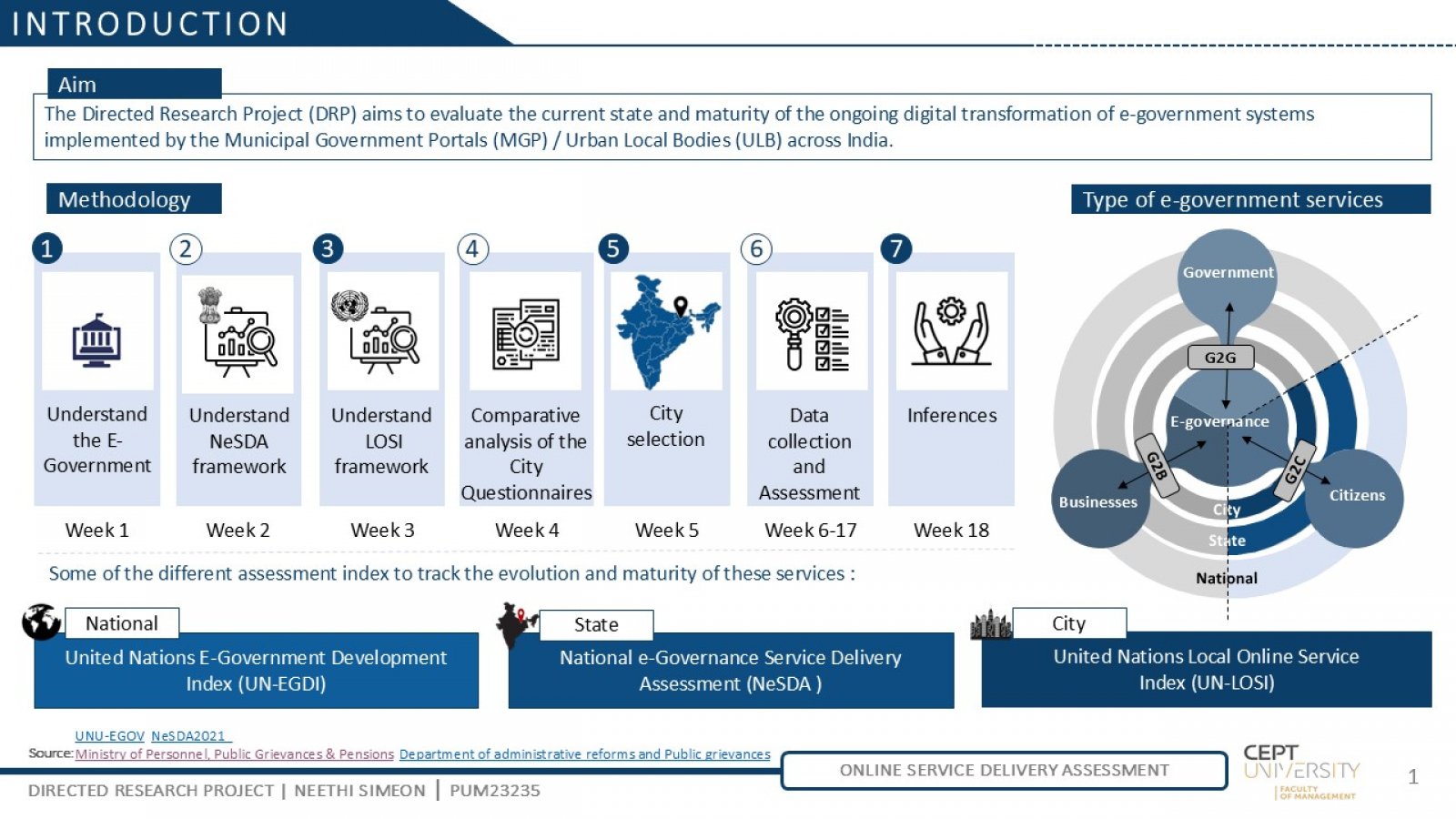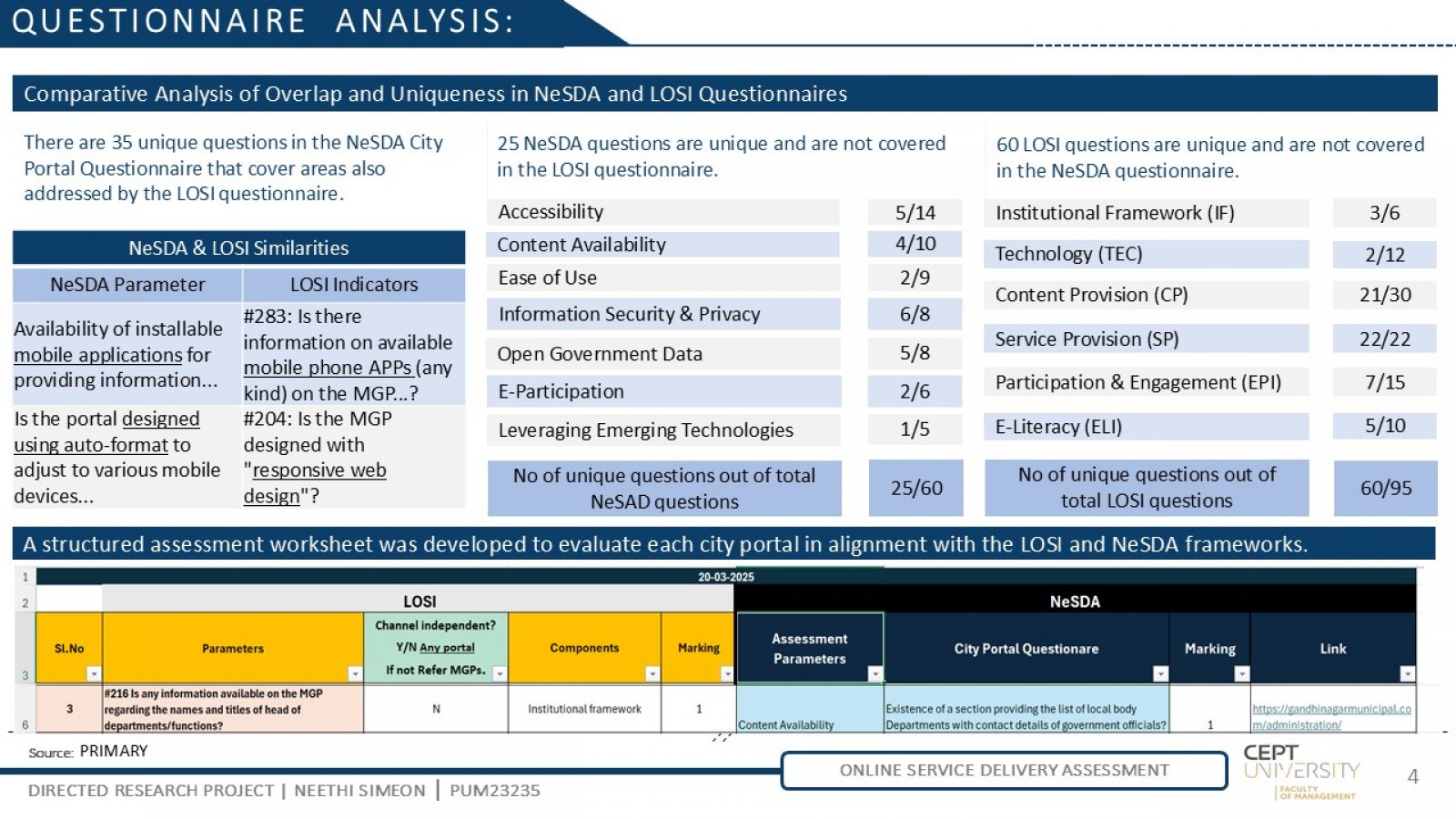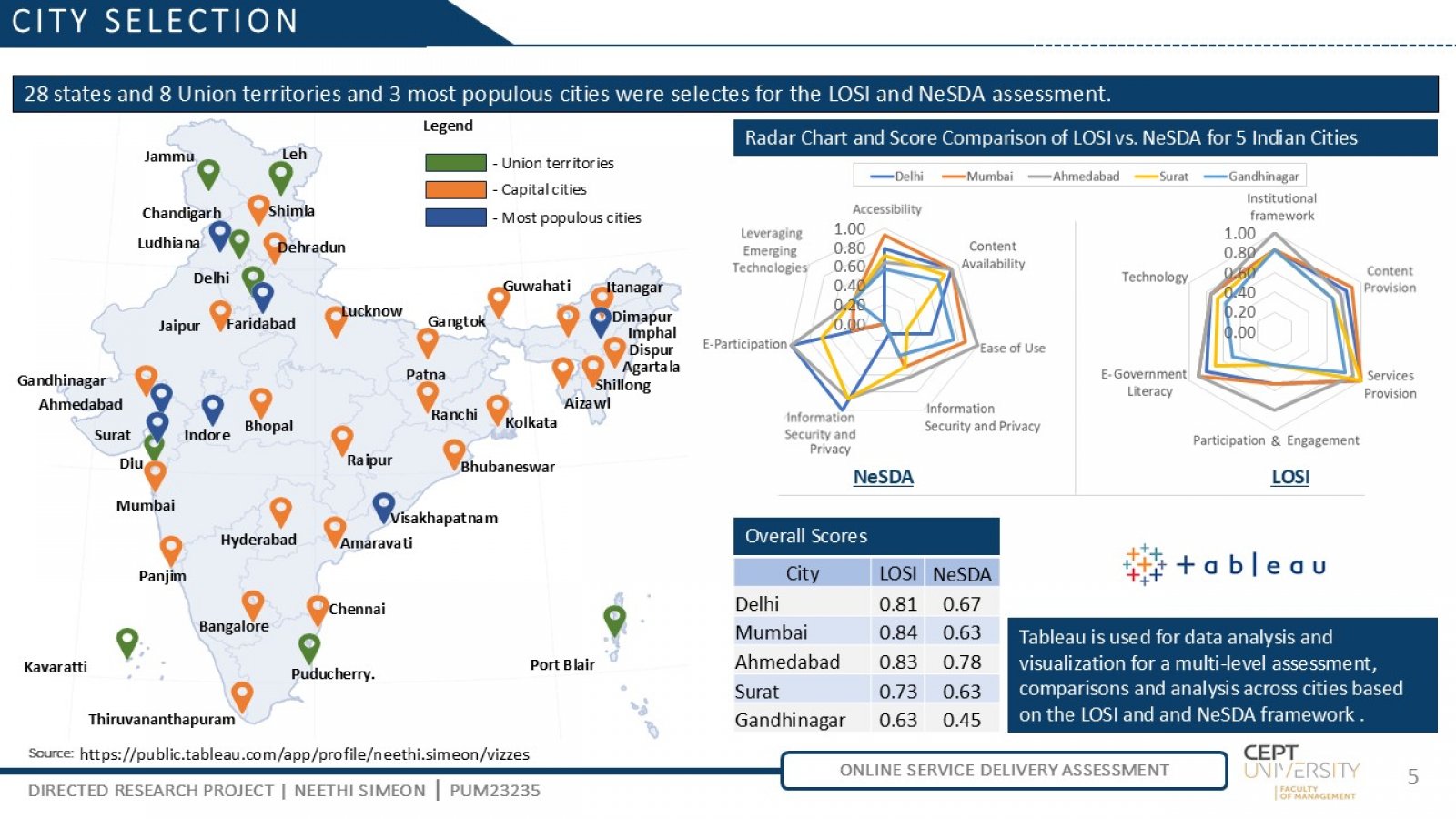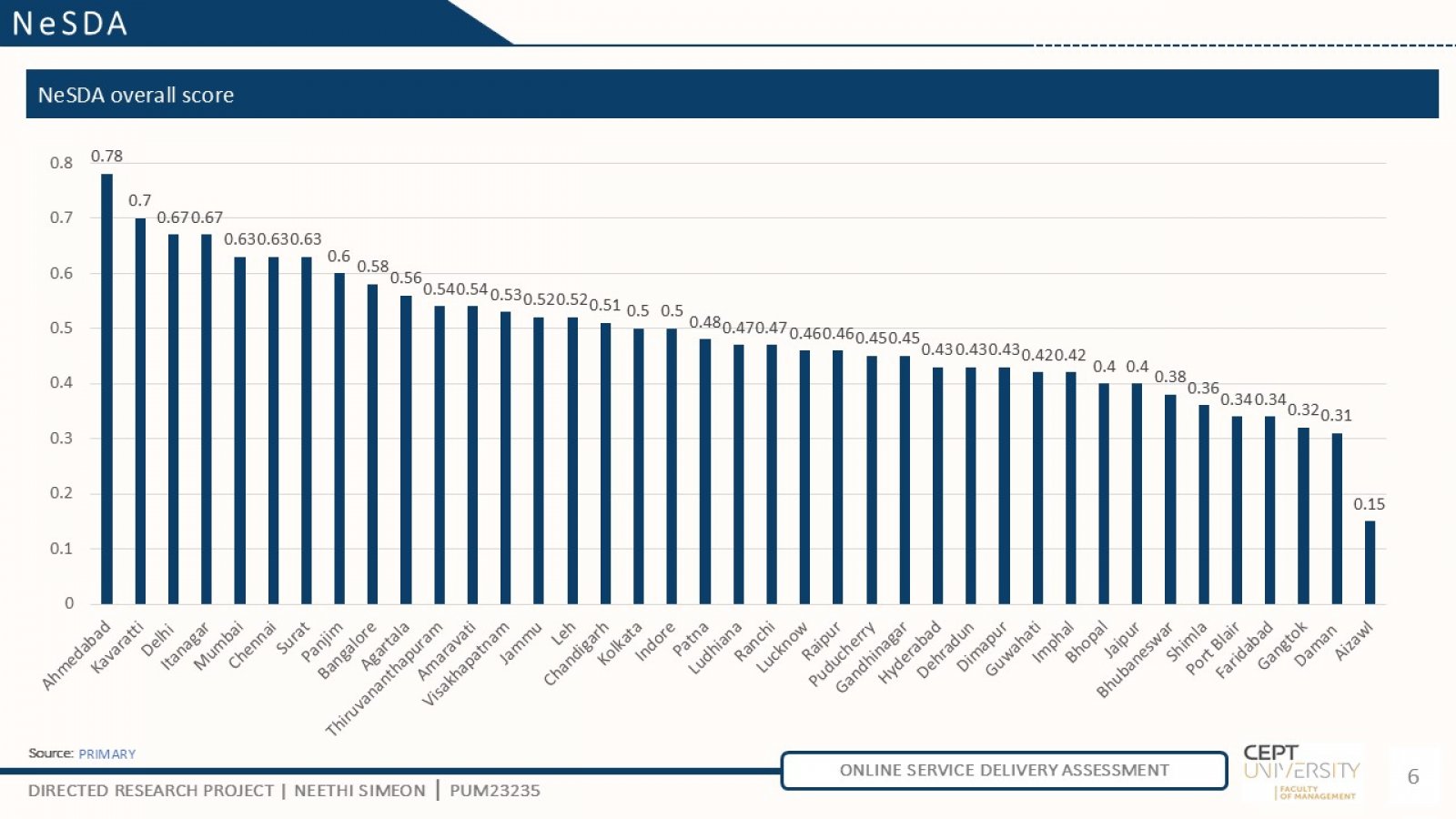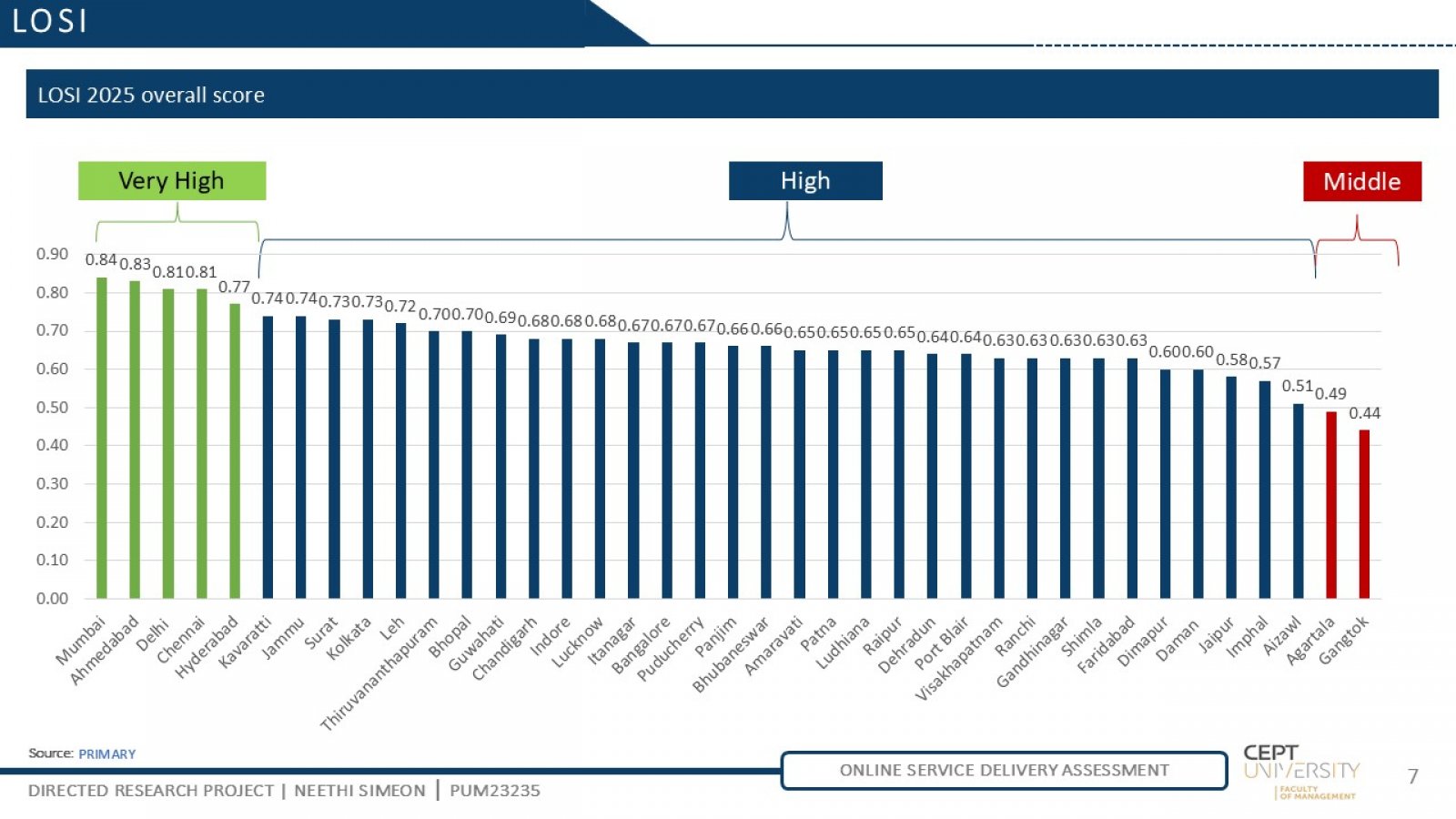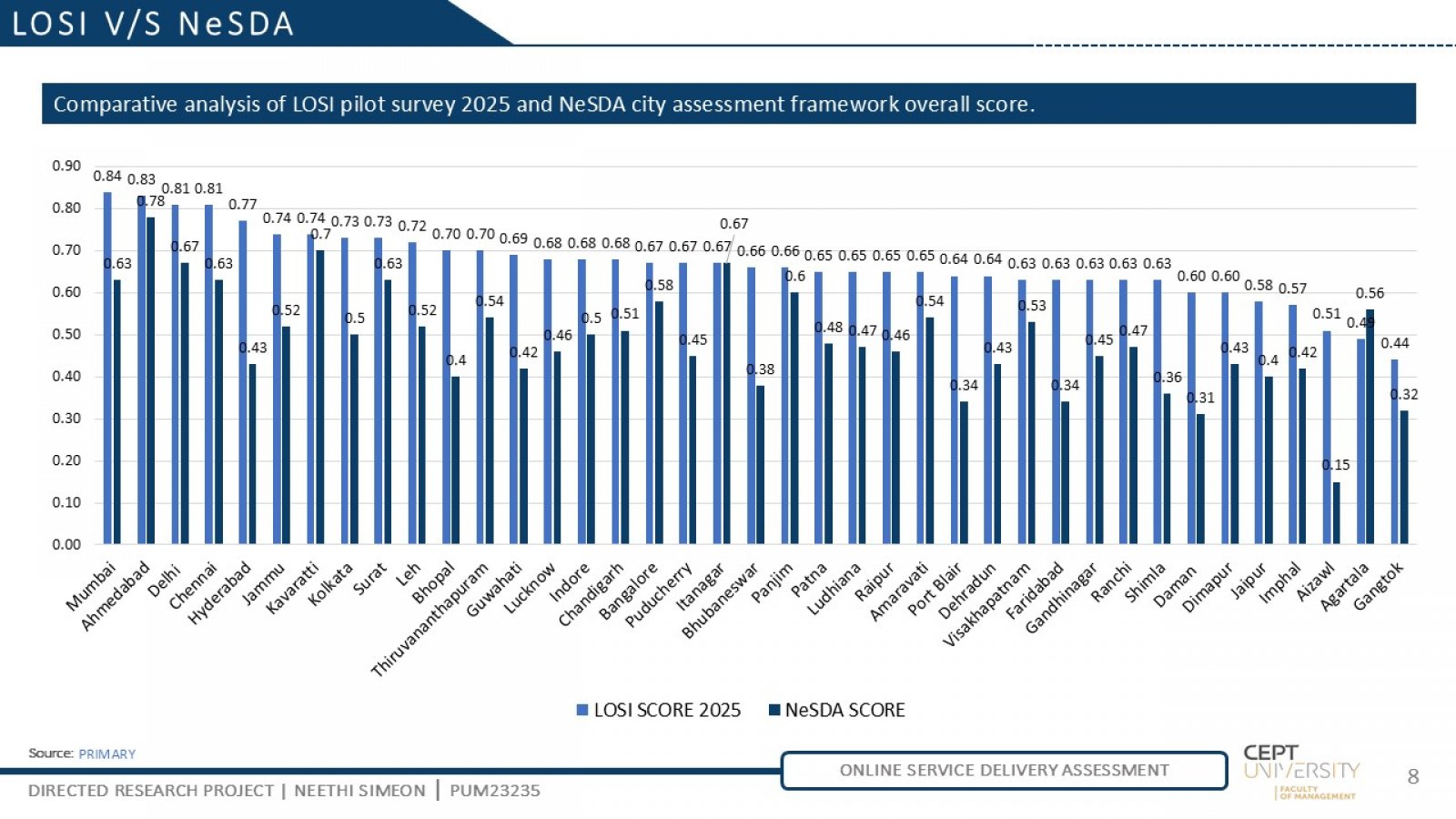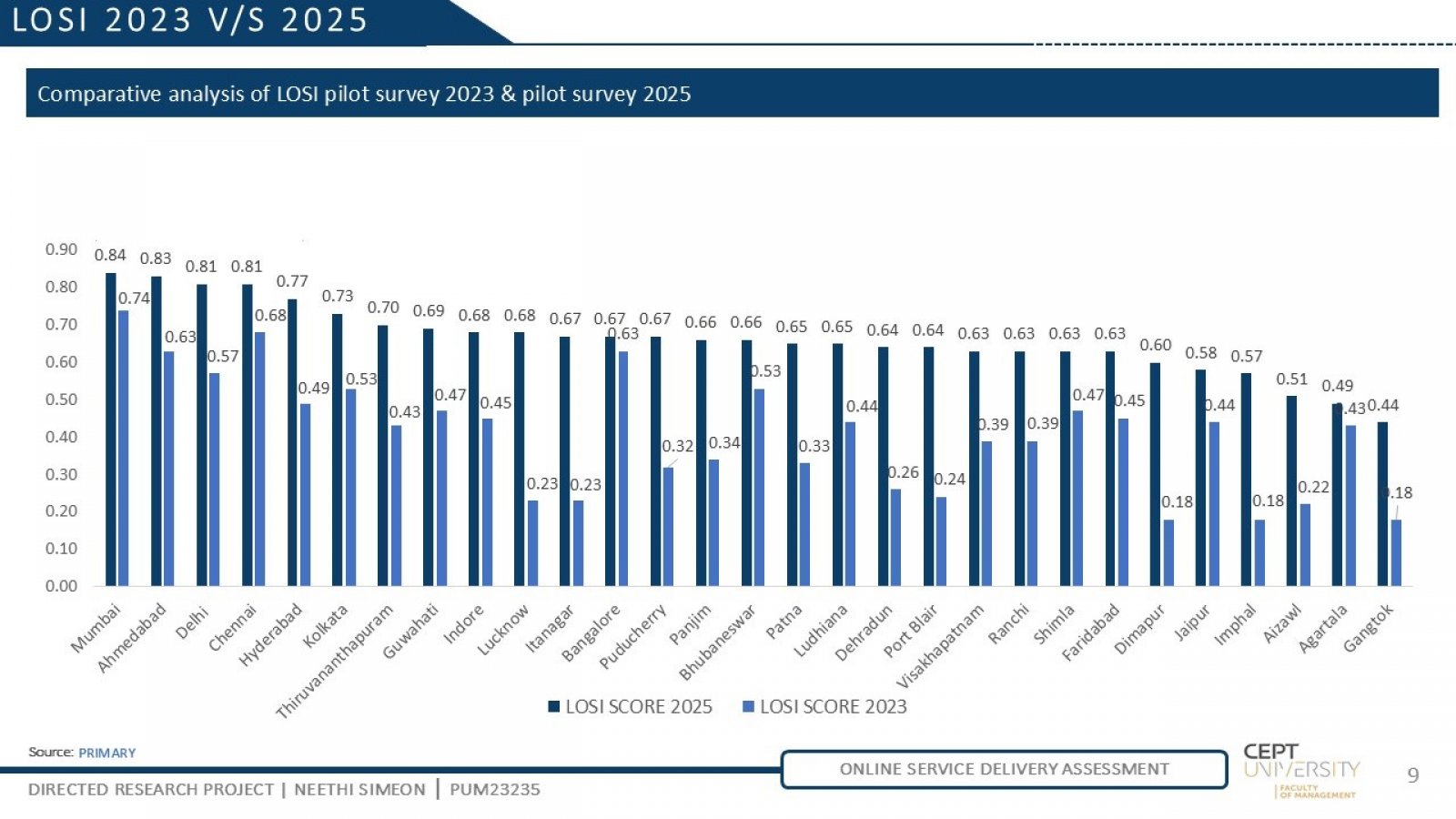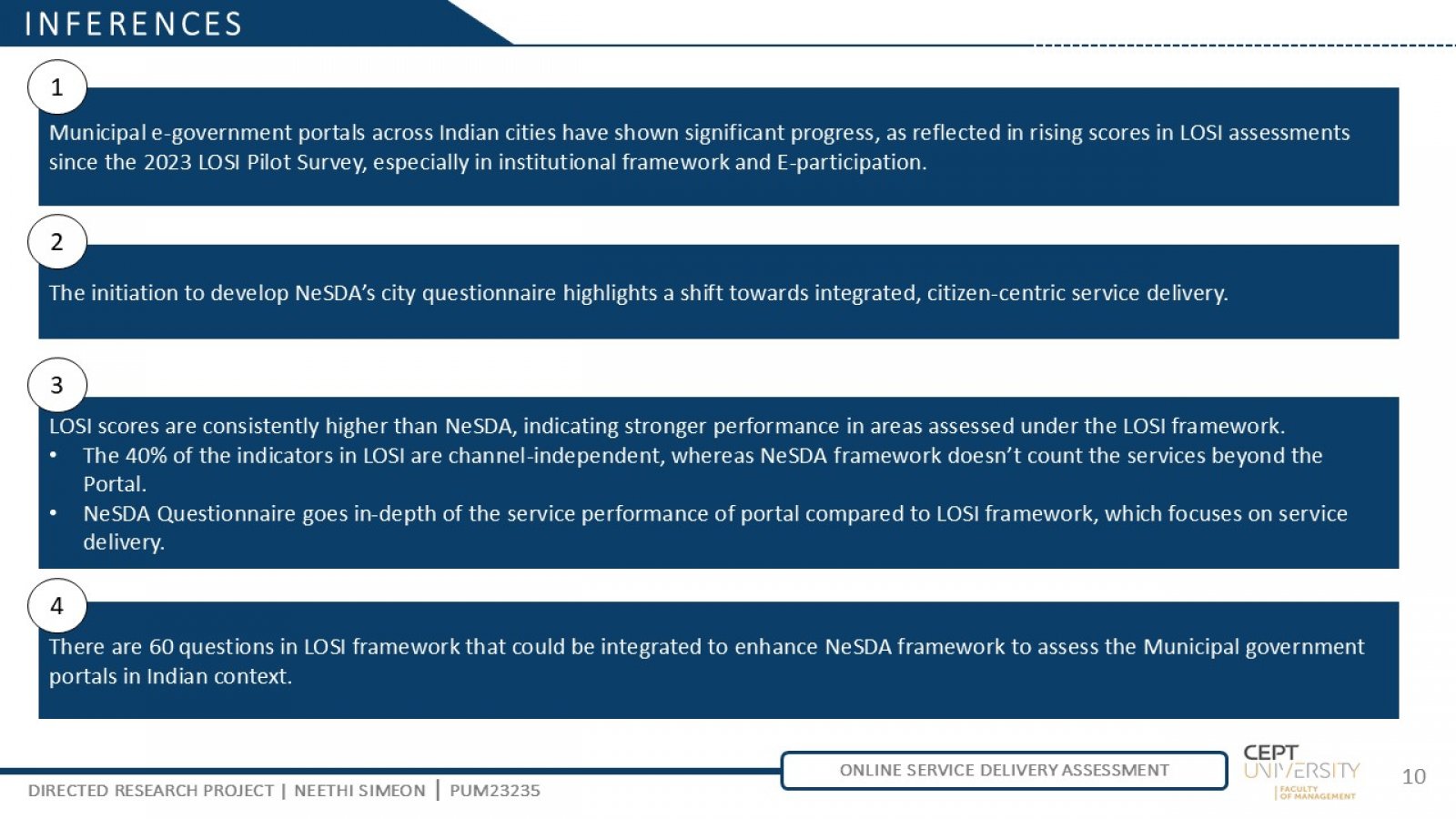Your browser is out-of-date!
For a richer surfing experience on our website, please update your browser. Update my browser now!
For a richer surfing experience on our website, please update your browser. Update my browser now!
In the evolving landscape of digital governance, assessing the effectiveness of MGPs (Municipal Government Portals) is crucial to ensure transparency, accountability, and improved service delivery. This study explores two prominent frameworks — the NeSDA (National e-Governance Service Delivery Assessment) developed by the DARPG (Department of Administrative Reforms and Public Grievances, Government of India) and the UN-LOSI (United Nations' Local Online Service Index) developed collaboratively by the UN-DESA (United Nations Department of Economic and Social Affairs, DPIDG (Division for Public Institutions and Digital Government), and the UNU-EGOV (United Nations University Operating Unit on Policy-Driven Electronic Governance) to evaluate the maturity of the ULBs (Urban Local Bodies) in the selected Indian cities. The project examines portal performance across dimensions such as accessibility, content, service provision, engagement, and technical infrastructure. Through binary scoring and comparative methodology, this project highlights the commonalities and distinctions between the two frameworks and presents a cross-method analysis and assessment for selected Indian cities.
